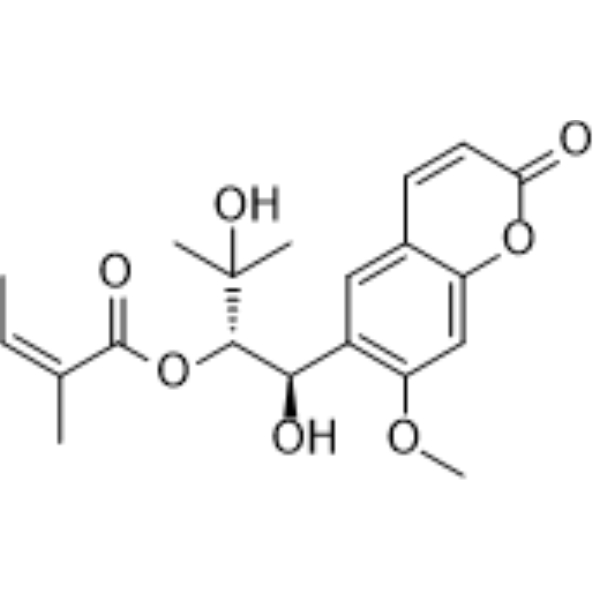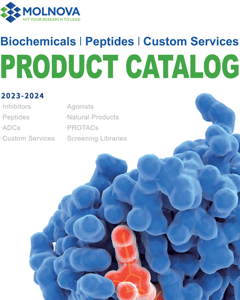
Angelol A
CAS No. 19625-17-3
Angelol A( —— )
Catalog No. M31676 CAS No. 19625-17-3
Angelol A and angelol B are passive diffusion as the dominating process in Caco-2 cell monolayer model.
Purity : >98% (HPLC)
 COA
COA
 Datasheet
Datasheet
 HNMR
HNMR
 HPLC
HPLC
 MSDS
MSDS
 Handing Instructions
Handing Instructions
| Size | Price / USD | Stock | Quantity |
| 10MG | 194 | In Stock |


|
| 50MG | Get Quote | In Stock |


|
| 100MG | Get Quote | In Stock |


|
Biological Information
-
Product NameAngelol A
-
NoteResearch use only, not for human use.
-
Brief DescriptionAngelol A and angelol B are passive diffusion as the dominating process in Caco-2 cell monolayer model.
-
DescriptionAngelol A and angelol B are passive diffusion as the dominating process in Caco-2 cell monolayer model.
-
In Vitro——
-
In Vivo——
-
Synonyms——
-
PathwayOthers
-
TargetOther Targets
-
Recptor——
-
Research Area——
-
Indication——
Chemical Information
-
CAS Number19625-17-3
-
Formula Weight376.4
-
Molecular FormulaC20H24O7
-
Purity>98% (HPLC)
-
Solubility——
-
SMILES——
-
Chemical Name——
Shipping & Storage Information
-
Storage(-20℃)
-
ShippingWith Ice Pack
-
Stability≥ 2 years
Reference
molnova catalog



related products
-
33-Dimethylglutaric ...
33-Dimethylglutaric acid is a compound found in human urine.
-
Nemifitide diTFA
Nemifitide (diTFA) is is a synthetic pentapeptide antidepressant with a potential for rapid onset of action. Nemifitide (diTFA) is a peptide analog of melanocyte-inhibiting factor (MIF).
-
Eflornithine hydroch...
Eflornithine hydrochloride, hydrate (DFMO; MDL-71782) is a drug found to be effective in the treatment of facial hirsutism.



 Cart
Cart
 sales@molnova.com
sales@molnova.com


